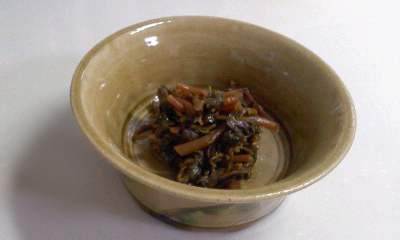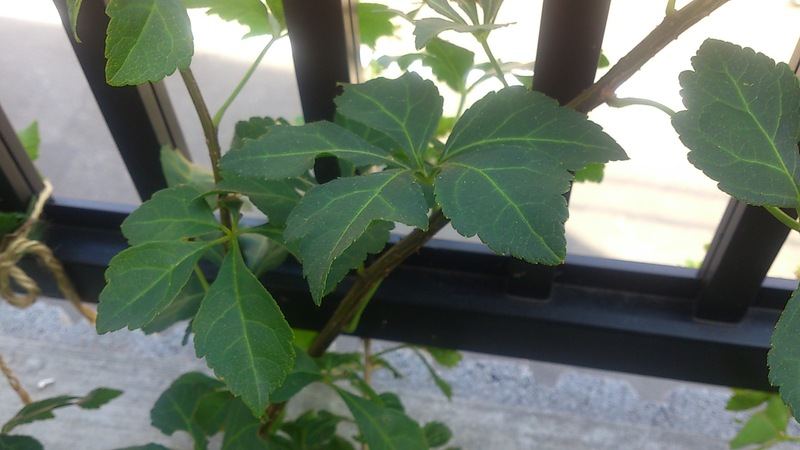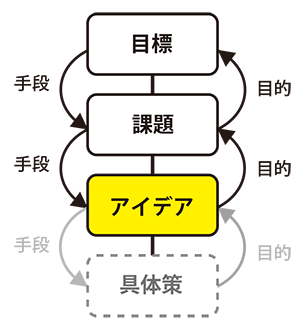In a recent column, I wrote about weeds as a theme, but someone pointedly criticized me: "If you took the food talk out of your column, there'd be nothing left!"
Fair enough. Whatever I write will sound like an excuse, but I actually had "edible weeds" arranged. They didn't arrive in time, so the content ended up lukewarm. My apologies.
 |
Hyō Stir-Fried in Soy Sauce
|
Its name is "slideweed," a genuine weed known nationwide as a pest in cultivated fields. However, in Yamagata, it has long been cherished under the name "hyou" and eaten like a wild vegetable. It has a unique slipperiness and sourness. Blanch it, stir-fry with sesame oil and chili peppers, then season with soy sauce and sake, and you've got a splendid side dish for rice. Once you know this flavor, you won't be able to stop drooling every time you see purslane on the roadside.
  |
|
Japanese Spikenard (left) and Dwarf Spikenard
|
|
While "edible weeds" is a wonderful concept, it was Uesugi Yozan, the ninth lord of the Yonezawa domain in Dewa Province during the mid-Edo period, who pioneered the new perspective of "edible hedges" as a famine-proof measure. His focus was on "Ukoji" (Aralia). Its thorns make it highly effective for security when used as a hedge, and its young leaves are edible from spring to early summer. The Yonezawa domain promoted creating hedges with it, which is why it's still commonly seen throughout the town today.
Following Lord Yozan's teachings, our home also plants dwarf five-needle aralia and mountain five-needle aralia for hedges. While dwarf five-needle aralia has soft leaves without any strong flavor, mountain five-needle aralia is overwhelmingly recommended for its blue fragrance and refreshing bitterness. Quickly blanch it and mix it into rice—you won't be able to stop eating.

Now then. In practical work, and even in training, the truly grueling part is the time spent searching for ideas. In terms of circular thinking, it's the "scatter mode" where you exhaustively consider every possible option. You toss and turn, unsure if that "aha!" perspective even exists.
Finding the actual "problem" that needs solving is especially tough. Many believe problems are extracted through research and analysis, but honestly, objectively identifying issues by crunching numbers isn't that hard—it's actually pretty easy. Why? Because it's a process that yields the same answer no matter who does it. Sure, if tweaking the current approach seems like it might work, that objective approach is sufficient.
But when the status quo just won't cut it, when you need that "aha!" moment to discover an idea that truly moves your target audience, that approach falls short. You have to think deeply about the target's true feelings (following the previous column, persistently, persistently converse with the little voice inside) to derive a set of challenges and ideas. You must mobilize all your life experience to pinpoint where the problem lies. It's truly a stressful task. If you fail, your very "human capabilities" come into question. But you won't get great ideas without going that far.
Uesugi Yōzan of the Uesugi clan also said, "If you do it, it will be done; if you don't do it, it won't be done. Nothing is impossible." It's like saying, "You can't do it because you won't do it. Do it!" When you think this was said by the creator of the brilliant concept (idea) of the "edible hedge," it carries more weight than mere motivational talk. Anyway, it seems you just have to give it your all.
Well then, next time. Let's change the topic a bit and think about "naming."
Enjoy!






